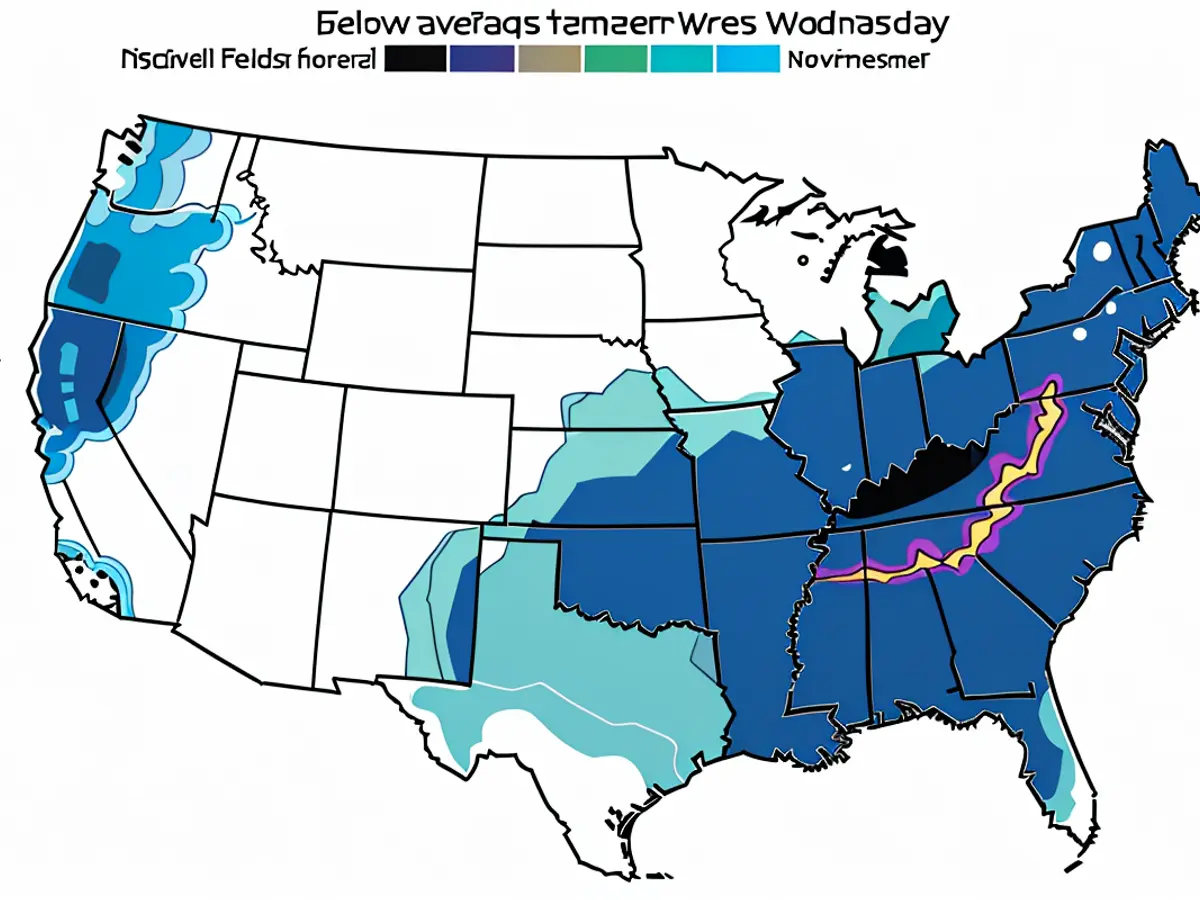Weather experts amazed by unique kind of tornado and unusual radar images.
Tillman County, Oklahoma, experienced multiple tornadoes that exhibited unusual behavior during an unusual night of weather.
At least two of these tornadoes had unexpected movements: one powerful tornado circled back and crossed its previous path once more, while another significant tornado rotated in what's typically considered the wrong direction.
"This is something we don't see every day," said Rick Smith, a meteorologist from the National Weather Service in Norman, Oklahoma, to CNN.
What made this event stronger was that both of these strange tornadoes emerged from a single powerful thunderstorm.
Let's dive deeper into this weird weather event.
A Wild Night in Oklahoma
A supercell thunderstorm, known for producing severe weather conditions, developed close to the Oklahoma-Texas border and headed east. This thunderstorm resulted in a "large and extremely dangerous" tornado that formed north of Loveland, Oklahoma, before 10 p.m. CDT, as per a weather service warning.
Radar images showcased this tornado traveling eastward before slowing down considerably, then turning north and west, and finally looping over a location it had previously hit.
Reflectivity (left) and velocity (right) radar imagery display a tornado with a looping pattern just north of Loveland, Oklahoma, during the night. The reds and greens in the right panel represent wind directions in respect to the radar. The tornado is where the two colors come together closely, indicating circular motions or winds reversing directions within the region. In this case, the winds are swirling clockwise in the same region where a tornado was seen from the ground. The winds usually blow from west to east, but intense tornadoes can sometimes curve back to the west as they lose strength, explained Smith. What's even more uncommon is that the tornado completed a full loop back over its initial path.
One striking example of a looping tornado was an EF5 category one that wreaked havoc on Greensburg, Kansas, in May 2007, destroying the town thoroughly. The tornado returned just north of the worst damage.
Following its loop-de-loop in Loveland, another issue arose: a new, powerful anti-cyclonic tornado developed on the southern edge of the same storm. Given that only about 1% of tornadoes are estimated to form counter-clockwise, this was already rare.
Reflectivity (left) and velocity (right) radar imagery show an anti-cyclonic tornado whirling just southeast of Loveland, Oklahoma, that night. The reds and greens in the right panel indicate wind directions in terms of the radar. The tornado can be spotted at the location where the two shades come together closely, as this indicates that wind speeds in that area are contrary to the general direction, or spinning - here, the winds were rotating clockwise in the same region a tornado was observed from the ground. As thunderstorms usually move from west to east, this anti-cyclone twister was unique for several reasons.
Almost an hour later, around 10:30 p.m. CDT, a "large and extremely dangerous" anti-cyclonic tornado formed southeast of Loveland. This twister was "nearly stationary or moving very slowly south," the weather service warning noted.
"It's not very common to see (tornadoes) be nearly stationary," Smith noted. "Tornadoes are usually just following the supercell thunderstorm."
However, certain storms were almost stationary and allowed for a tornado to develop, linger, and reform, he added.
To add to this rare scenario, the anti-cyclonic tornado didn't just rotate in an unusual direction and remain stationary, it also created damage signatures on radar imagery by lifting debris thousands of feet in the air, indicative of a powerful tornado. Anticyclonic tornadoes are normally weak and short-lived, but this one was remarkable in two ways.
Fortunately, this bizarre weather phenomenon unfolded over a less populated area, and there have been no reports of casualties or damage to buildings. The Tillman County Emergency Management office confirmed this on Wednesday afternoon.
Additional severe thunderstorms are projected to hit areas from Texas to Nebraska tomorrow, and a few might even cause tornadoes, including in the same regions where Tuesday night's events took place.
Read also:
- Rain expected again: The situation in the flood areas remains threatening
- Continuous rain until Thursday: Concerns about collapsing dykes are growing in the flood areas
- Flood situation remains tense - more rain forecast
- Flood situation remains tense - weir on the Elbe is opened
In the unusual radar images, the powerful tornado that Circled back and crossed its previous path showed circular motions or winds reversing directions within the region.
Given the occurrence of two tornadoes with unusual movements and counter-clockwise rotation, Tillman County's weather event was indeed "something we don't see every day."
Source: edition.cnn.com








